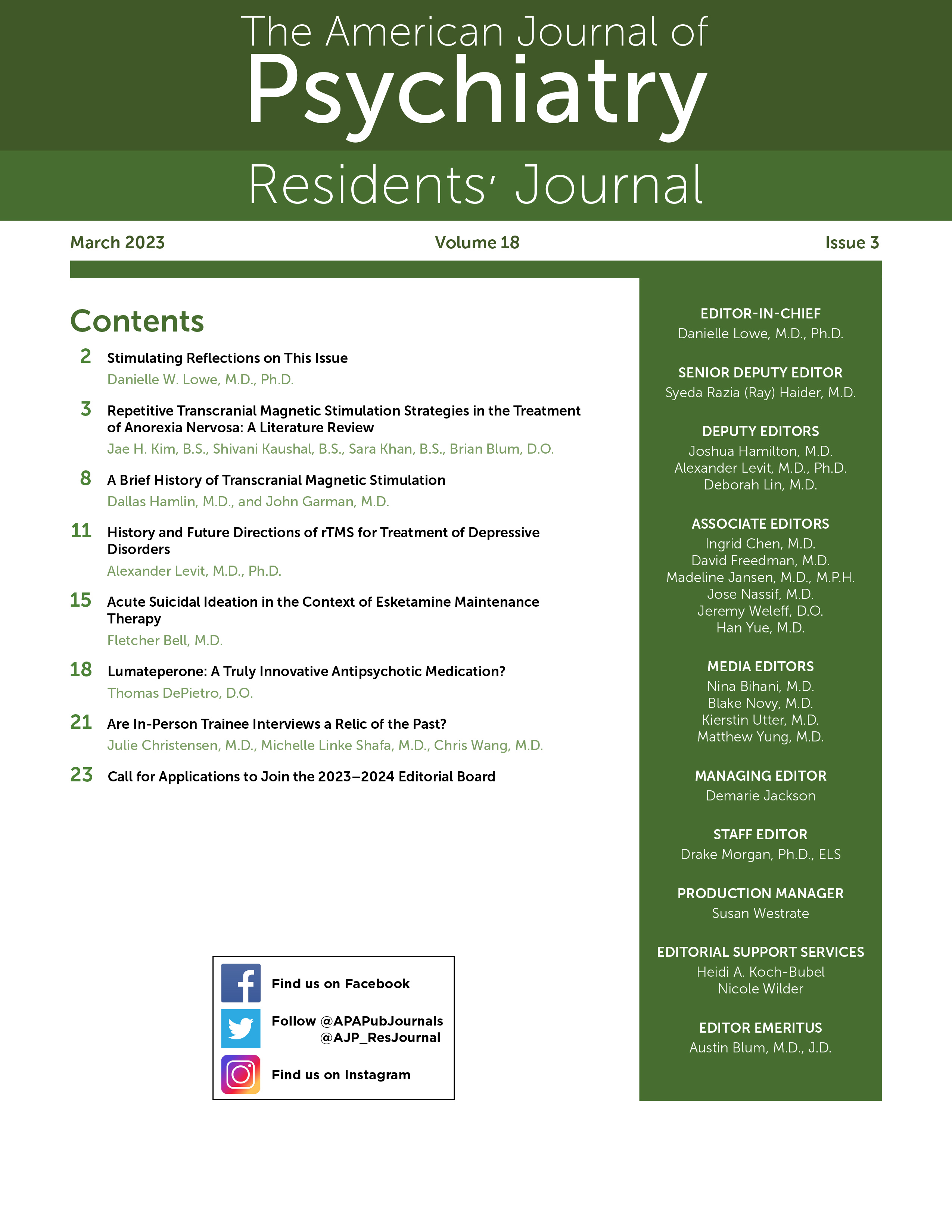The fourth year of medical school is a relief for many. Schedules have finally lightened a bit, and the end of medical school is near. Yet the fourth year is just the beginning of a new sort of strain: the financial and emotional drain required to secure a residency position. As newly minted child and adolescent psychiatry fellows who have navigated both in-person and virtual interviews, we have some thoughts.
Acceptance of an in-person residency interview means a commitment of both time and money. U.S. allopathic medical students applying to residency programs can spend upwards of $13,225 during residency application season (
1). These costs include application fees, flights, food, and lodging. If you are lucky, a friend in the area might agree to host you overnight. Still, nights away from home cause nervousness and discomfort ranging from barely making it out of the operating room to get to the airport in time to having a friend’s cats biting your toes in the middle of the night. Furthermore, because of the time commitment needed for interview travel, most medical students take an entire month off from rotations to interview for residency positions. We acknowledge that the investment of time and money required to attend an in-person interview, compared with that required for virtual interviews during fellowship season, indicates greater commitment.
Entering the fall 2021 season of virtual interviews for fellowships, we wondered whether we could get to know a program virtually as well as we could if visited in person. Our answer after a season of virtual fellowship interviews is “Not quite, but we think that is okay.” During fall 2021, we spent many hours on video calls. We met the faces of fellows and faculty. In some cases, we even met their pets! We missed the intimacy of a plated dinner with current trainees and traded that experience for unnatural Zoom socials where we raised our virtual hands to speak. Rather than tour the city and walk the hospital campus ourselves, we asked for others’ opinions of the location, workplace culture, and program strengths and weaknesses. We shared our passions, and we heard the inflection of interviewer voices when they were truly enthusiastic about our career goals. In short, we still connected.
As we reflect on the situation, we can ask, “What sort of a medical workforce did the pre-2020 in-person residency interview system produce?” Of the programs where the three of us interviewed before 2020, only one, the Mayo Clinic, paid for lodging during our interview trip. This also happened to be the institution that we all prioritized in the match. Most other institutions paid for the day’s meals. None paid for airfare. The financial strain perpetuates our field’s historic recruitment of doctors from backgrounds of wealth.
In a recent multi-institutional survey, both program directors and applicants identified equity as a major benefit of virtual interviews (
2). If we hope to recruit physicians from underrepresented backgrounds, we need to build a structure for medical school, residency, and fellowship recruitment that is inclusive of those less likely to have a safety net because of systemic discrimination. Blacks, Mexican Americans, Native Americans (American Indians, Alaska Natives, and Native Hawaiians), and mainland Puerto Ricans are designated as underrepresented in medicine by the Association of American Medical Colleges (
3). We would add individuals who identify as lesbian, gay, bisexual, transgender, and queer to the list of applicants less likely to have a robust safety net. We wonder how virtual interviews may affect trainees from these communities, as well as others for whom racism, unequal opportunity, and discrimination have historically made a career in medicine financially out of reach.
Might there be a middle ground where equity and in-person interviews coexist? A hybrid model of trainee interviews may provide just that solution (
2,
4). This could take shape as an initial screen of ERAS applications, followed by a first interview in virtual format, and then a final on-site interview. In this model, fewer applicants would make the cut for in-person interviewing, which may make it feasible for training programs to finance applicant travel. This may also negate the idea of programs making in-person interviews “optional,” an idea we do not favor because it would again afford undue advantage to those with financial resources.
As psychiatry trainees, we feel the need to raise one final point about the mental health toll of in-person interviews on applicants. In a recent survey of 137 medical school students, a significantly lower rate of self-reported extreme stress was reported by those with virtual interviews in 2021 (57%) than those with in-person interviews in 2020 (76%), with cost being a major contributor (
5). Are in-person interviews worth the financial, logistical, and emotional costs? If so, it’s time for medical training institutions to invest.
